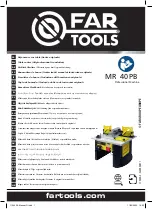
169
Glossary
ADSL2+ offers a doubled frequency range used for down-
stream transmission, and thus double the maximum
bandwidth achievable for downstream to 24 Mbit/s.
ADSL2+ is completely downward compatible, meaning
that terminal equipment compliant with ADSL and ADSL2
can also be operated on ADSL2+ lines, although they can-
not exploit the advantages of ADSL2+.
ADSL-Controller
An ADSL-Controller is an electronic hardware module that
allows a computer to access an ADSL line. ADSL-Control-
lers are stationary equipment, included on internal ADSL
cards (for the PCI bus) or in external ADSL modems (with
USB or Ethernet ports).
DECT
abbreviation for Digital Enhanced Cordless Telecommuni-
cations
DECT is a European standard for cordless telephony which
was drafted by the European Telecommunications Stan-
dards Institute in 1991 and officially adopted in 1992.
DECT defines the air interface between a mobile handset
and its base station, and supports both voice transmis-
sion and data transmission with flexible transfer speeds.
default gateway
see gateway
DHCP
abbreviation for Dynamic Host Configuration Protocol
DHCP is a protocol for the dynamic negotiation of the op-
erating parameters for the TCP/IP protocol (TCP is a trans-
port protocol based on the Internet protocol). The comput-
ers in a local IP network (DHCP clients) access the DHCP
server as part of their operating systems’ start procedure.
The central administration of the TCP/IP operation param-
eters makes it possible to avoid address conflicts caused
by IP addresses accidentally assigned more than once.
DHCP server
The DHCP server assigns each client an IP address that is
has not yet been assigned at the present time. The DHCP
server also informs the client of the IP addresses of the
















































